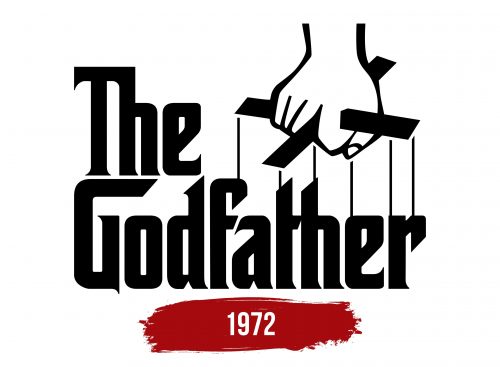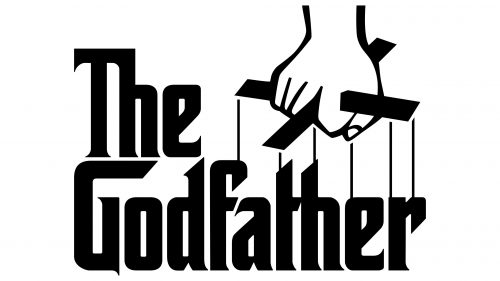The Godfather logo symbolizes a grim and dark play where people act as if they are willless pawns under the control of an invisible ruler. The emblem conveys the essence of the “father” of the mafia family.
The Godfather: Brand overview
In 1972, the world of cinema was shaken by the appearance of one of the most iconic films in movie history – “The Godfather.” This film, which became a true breakthrough in the genre of crime drama, was based on Mario Puzo’s novel published in 1969. The plot immerses the viewer in the life and intrigues of the powerful Italian mafia family, the Corleones.
Francis Ford Coppola, who directed the film, marked “The Godfather” as a major milestone in his career. At the center of the plot is the life of Vito Corleone, the family head, whose image was masterfully embodied by Marlon Brando. Al Pacino, who played his son, Michael, also delivered an outstanding performance, becoming a star of global magnitude.
“The Godfather” received widespread acclaim and became a cult classic. The film captured the audience’s attention, becoming the highest-grossing film of 1972 and winning numerous awards, including three Oscars and two Golden Globes. The success of the first part led to the creation of two sequels: “The Godfather Part II” (1974) and “The Godfather Part III” (1990), which also became classics of cinema and significantly influenced the development of film art.
In 2022, to mark the 50th anniversary of the release of the first part, a meticulous restoration of the entire “The Godfather” trilogy was undertaken. This event allowed new generations of viewers to appreciate the grandeur and craftsmanship of this cinematic masterpiece.
Meaning and History
The logo of the first part of the famous trilogy outlines a system of subordination and control that reigned in mafia structures. For the book and the film, the same logo was chosen, created by Neil Fujita, an American graphic designer of Japanese descent. The image is a symbol of intrigue and manipulation.
On the emblem, against a black background, is a white inscription with the name of the trilogy – The Godfather. Above the last part of “father,” a puppeteer’s cross is placed, holding the brush of an invisible person. It controls the letters suspended on a string.
What is The Godfather?
The first part of the famous franchise is about the Sicilian mafia family, Corleone. Based on the story by Mario Puzo – an American writer of Italian descent. The film was directed by Francis Coppola at Paramount Pictures. In theaters, the film collected 291 million dollars.
The symbol of the cross resonates with the nickname of the head of the Sicilian mafia. The choice is related to the godfather’s duties to instruct and care for his godchild, just like the head of the mafia’s task to train, guide, and provide for the members of the organization. The word “mafia” itself means shelter and care.
The analogy with puppet theater shows:
- The invisible interconnection of events. The film is a sequential chain of revenge and intrigue for power. New events stemming from previous ones reveal the picture of the terrifying crimes of the characters.
- The presence of a person who invisibly controls the performance. From an outside perspective, the characters made illogical and incorrect actions for their status. Police killed and broke the law, directors were given roles regardless of talent, and politicians supported drug manufacturers. However, their actions were dictated by the thoughtful orders of the mafia head.
- A system of subordination and obedience. In the cartel, the “father’s” decisions are absolute. The leader, by doing favors for people, puts them in a state of dependence and debt that must be repaid. Afterward, he only has to “pull the strings.”
The idea of leadership and influence on people, reflected in the emblem, is inspired by one of the famous phrases from the film: “I’m gonna make him an offer he can’t refuse.”
1972
Font and Colors
The black-and-white tandem of the composition indicates the opposition between good and evil. The black background emphasizes that the story unfolds on the “dark” side in a criminal environment. The base conveys tragic, heavy, and sad events. Death, betrayal, revenge, and murder run through the picture like a mourning ribbon. Thin white elements, which seem to dissolve in the darkness, demonstrate the transformation of former marine Michael Corleone into a mafia boss.
In some variants, the colors are reversed, emphasizing the whims of fate and the dark paths carved by the characters.
The font of the inscription is unique and named after the mafia don – Corleone Font. The curves and twists of the glyphs reflect the complicated destinies of the characters. The need to hide. They convey the complex hierarchy of subordination within cartels. The pointed ends of the letters resemble blades, narrating the battles within the clan and the struggle for power. The ligature of the letters Th represents the continuous transition of power from one don to another immediately after death.







